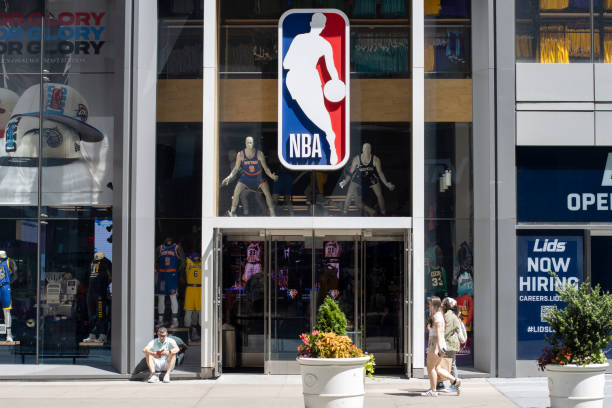The NBA trade deadline is one of the most exciting times of the year for basketball fans. As teams position themselves for the playoff push, contenders look to add that missing piece while struggling squads eye the future. Executives across the league are working the phones, looking to take advantage of fleeting opportunities to improve their franchises.
Furthermore, deals made before the deadline can shape the landscape of the NBA for years to come. There are many factors at play during this frantic period. As the deadline approaches, let’s break down key considerations that drive negotiations and predictions for the moves we may see.
- Assess Team Needs
The first thing savvy general managers do heading into the trade deadline is accurately assess their team’s needs. This involves looking honestly at strengths and weaknesses and how the roster stacks up against top opponents.
Teams lacking rebounding may target big men or those struggling defensively may desire perimeter stoppers. Obvious needs also emerge when stars go down injured. Losing a key player can create a new void that must be addressed. Once management identifies the gaps, they can zero in on players who fill those roles.
Every NBA team, whether a contender vying for a championship or a bottom dweller seeking improvement, has areas that need attention. The key lies in being realistic about what moves can propel them closer to their goals. Making trades solely for change rarely pays off in the long run.
Furthermore, when General Managers (GMs) accurately diagnose their team’s needs, they position themselves to make strategic moves that can elevate their squad. As the NBA trade deadline approaches, this process becomes crucial for teams looking to address specific deficiencies or enhance their overall roster composition.
- Expiring Contracts
One of the subplots that makes the trade deadline so interesting is players on expiring contracts. These are veteran players in the final year of their deals. This creates situations where teams need to decide whether to let players walk in free agency or get value while they still can.
Stars approaching free agency who may leave can bring significant assets in return. At the same time, retaining expiring role players doesn’t hamper future cap flexibility. Teams out of contention may flip expiring contracts to pile up draft picks and prospects.
The right expiring contract traded to a team desperate for help at a specific position can reap huge returns. There are always several impact-expiring deals moved at the deadline that shift futures for franchises.
- Buyers and Sellers
Based on record and short-term objectives, teams position themselves as either buyers or sellers at the deadline. Buyers are squads over the cap looking to improve and make a playoff push.
They sacrifice future assets to upgrade and bring in established talent. Sellers are non-contenders focused on the long-term who deal with veterans for picks, prospects, and financial flexibility. Sellers hope these assets pay off, while buyers want instant gains.
Some teams straddle the line as both buyers and sellers. An example is trading an established veteran with an expiring contract for a young player. Buyers improve by filling a hole while selling by grabbing potential future talent.
There is often speculation about whether borderline teams will be buyers or sellers. Organizations must realistically assess their chances before dealing away the future or sacrificing youth for short-term goals.
- Superstar Movement
While significant superstar movement is rare at the deadline, it does happen from time to time. There are always rumors swirling around unhappy stars looking for trades to contenders.
For example, teams out of contention may deal with their disgruntled superstar to speed up a rebuild. Contenders sometimes assemble monster packages to land the final piece to put them over the top.
Blockbuster superstar trades are complicated with many moving parts but can completely shift the league’s landscape when they go down. Even if no actual deals materialize, leaked trade talks regarding unhappy superstars like Anthony Davis in 2019 can dominate deadline buzz.
Fans always speculate if this will be the year some team pulls off a landscape-changing superstar heist.
- Salary Cap Considerations
Salaries, caps, exceptions, and restrictions — the business side of the NBA influences deadline decisions—besides, teams over the luxury tax try to cut wages. Contenders seek ways to add salary and depth creatively.
Cap space next summer must also be factored in when weighing trades. The most cunning front offices manage to improve their roster and balance sheet in a single savvy deal.
The Collective Bargaining Agreement contains many intricacies that impact trade. For example, teams cannot aggregate salaries over 175% plus $100,000 in trades. Understanding how to navigate cap realities and CBA nuances creatively can lead to lopsided trades.
The cap consequences of trades years down the road must also be considered. Smart management of financials and contract details often determines trade deadline winners and losers.
Conclusion
The trade deadline represents high-stakes poker among frantic executives. By accurately addressing team needs, capitalizing on expiring deals, and watching for superstar movement, NBA teams position themselves for success.
Hence, navigating cap realities and utilizing trade exceptions further amplifies a team’s ability to optimize its roster composition while maintaining financial flexibility.
Of course, there will be many surprises and inactive teams as well. The speculation and build-up culminate in a single day of chaos that shapes rosters and championship hopes. Watching this trade deadline unfold will be wild, unpredictable, and hugely impactful.








